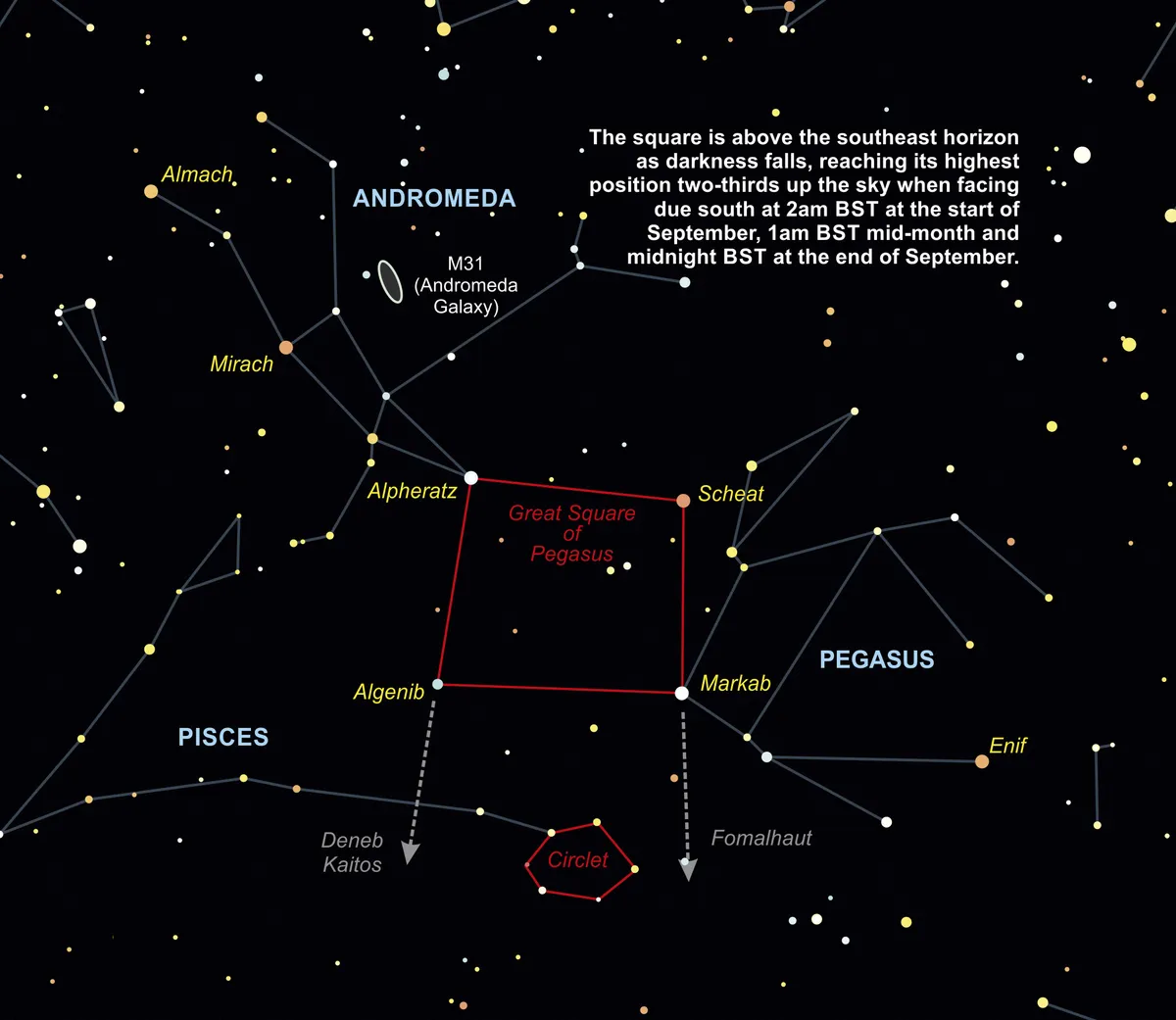The transition from summer to autumn skies is underway in the UK. The bright, dramatic stars of summer are gradually replaced by more subtle fare, led by Pegasus, the Flying Horse.
This unusual mythological creature is complicated by the fact that it’s only the upper part of the horse’s body that’s represented. Oh, and it appears upside-down in the sky, Pegasus’s head sits in the constellation’s southwest corner, with the star Enif marking its nose.
The horse’s torso is represented by a large geometric shape known as the Great Square of Pegasus. On charts it looks quite prominent, but in reality, its stars aren’t that bright. The sides of the square aren’t of equal length either and to cap it all, only three of the stars actually belong to Pegasus!
The northeast corner star is Alpheratz, the alpha star of Andromeda, the Chained Princess. It once belonged to Pegasus, as Sirrah or Delta Pegasi, but was formally reassigned to neighbouring Andromeda in 1930.
The square is useful as a guide. Immediately south of its southern edge lies the faint Circlet asterism within Pisces, the Fish.

Use the western side, following its line south for three times its length to arrive at bright Fomalhaut in Piscis Austrinus, the Southern Fish. Follow the eastern side south a little over twice the side’s length and you’ll arrive at bright Deneb Kaitos ‘the whale’s tail’, a star belonging to Cetus, the Whale.
Extend the diagonal from Markab through Alpheratz in the northeast to locate three stars of similar brightness in Andromeda. Locate the middle star Mirach, then make a right-angle turn to head up the sky. Keep going for half the length of the square’s southern edge to arrive at the Andromeda Galaxy, M31.
Read more: